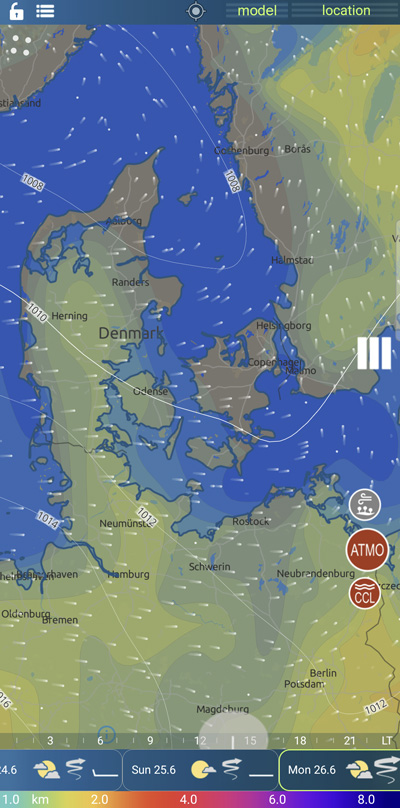Convective Condensation Level (CCL)

The Convective Condensation Level (CCL) is a meteorological term that refers to the altitude at which air parcels become saturated and begin to form clouds through convective processes. It represents the height above the ground where the air reaches its dew point temperature and condensation occurs.
The CCL is closely associated with convective activity and is particularly relevant to aviation, including piloting and paragliding. As the sun heats the Earth's surface, the air near the ground warms and becomes buoyant, leading to vertical air movements known as convection. When the rising air parcels reach the CCL, they cool adiabatically due to the decrease in atmospheric pressure with altitude. As a result, the air reaches its dew point temperature and water vapor condenses to form visible clouds.
For pilots and paragliders, the CCL plays a significant role in flight planning and decision-making. The presence of a well-defined CCL indicates the potential for convective clouds and associated updrafts, which can be exploited to gain altitude and sustain flight. Paragliders, in particular, rely on thermal updrafts generated by convective processes to stay airborne and achieve longer flights.
Understanding the CCL helps pilots and paragliders identify areas of convective activity and predict the formation of thermals. By analyzing weather forecasts, temperature profiles, and moisture content, they can estimate the height of the CCL and determine the optimal altitude to initiate flight or engage in soaring techniques. However, it's important to note that the actual location and strength of thermals can vary depending on local atmospheric conditions, terrain features, and other factors.
Monitoring the CCL and its evolution throughout the day is crucial for assessing the potential for convective activity, cloud formation, and the availability of thermal updrafts. Pilots and paragliders take this information into account when planning their routes, determining takeoff and landing locations, and adjusting their flight strategies to maximize safety and performance.